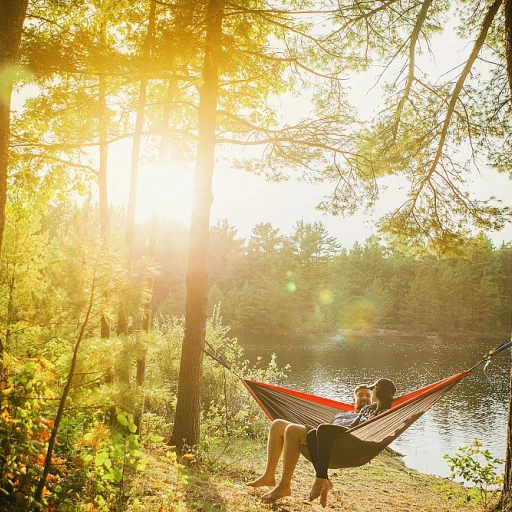Understanding the Role of a Wooden Hiking Staff
The Essential Role of a Wooden Hiking Companion
The wooden hiking staff, often considered a staple in the gear of hiking enthusiasts, serves multiple functions that enhance the outdoor experience. Unlike modern alternatives like aluminum poles or carbon-fiber sticks, a wooden hiking staff is treasured not just for its utility but for its rustic charm and versatility in various terrains. With natural materials such as hickory or chestnut, these staffs offer durability and a connection to nature that often resonates deeply with hikers.
Hiking staffs act as a steadying companion on uneven ground, helping to maintain balance and stability on rocky paths or slippery trails. For those who engage in country walking or more challenging terrains, cane-like hiking sticks provide the extra confidence needed to tackle unpredictable landscapes.
Important details such as the length and weight of the staff are crucial in ensuring it complements your stride and supports your movements efficiently. The handcrafted nature of these sticks often means they are tailored to meet specific hiking needs, from long treks across rugged terrain to casual strolls in the woods. Moreover, the aesthetic appeal—a walking stick hand carved from wood—adds a personalized touch that many hikers appreciate, with options like rustic walking sticks becoming popular for those who appreciate tradition and craftsmanship.
Understanding the price and availability is essential as these staffs are typically sold in specialized shops. Though sometimes priced higher than modern counterparts, the longevity and uniqueness of a finely crafted wooden staff make it a worthwhile investment for serious hikers. Most shops offer free shipping, making it easier to find a staff that fits your needs without leaving home.
Ultimately, the choice between wooden hiking staffs and modern alternatives boils down to personal preference. For those who value a traditional approach, a wooden hiking staff is more than just a tool—it's a trusted companion on the trail.
Materials and Craftsmanship
Craftsmanship and Materials: A Closer Look
When venturing into the world of hiking and walking, understanding the intricacies of wooden hiking staffs becomes essential. A wooden hiking staff is not just an accessory; it reflects artistry combined with functionality. The selection of wood is critical, and traditional choices like hickory and chestnut are highly favored for their durability and rustic charm. These woods are hand-carved into walking sticks and canes that offer not just support but a touch of elegance to your outdoor experiences.
Craftsmanship plays a vital role in the quality of hiking staffs. Known for their handcrafted details, each staff is unique, carrying the mark of its maker's skill. Rustic walking sticks are often sculpted by skilled artisans who focus on the natural patterns in the wood, enhancing both beauty and strength.
The price of these staffs can vary significantly, often reflecting the level of detail and craftsmanship invested in them. While some prefer a simple, straightforward design sold at a regular price, others opt for more elaborate, hand-carved patterns that transform the hiking stick into a piece of art.
Additionally, many shops offer free shipping for online purchases, allowing you to acquire a high-quality wooden hiking staff without the hassle of transporting it from a physical store. This convenience, coupled with the ability to choose from a wide stock, ensures that you can find the perfect fit for your hiking needs.
Whether you're selecting a long hiking pole for country walking or a sturdy cane for regular hikes, understanding the materials and craftsmanship is key to choosing a wooden walking stick that enhances your outdoor adventures.
Finding the Perfect Fit
Ensuring the Best Fit for Your Hiking Experience
Finding the perfect wooden hiking staff goes beyond mere aesthetic appeal. It ensures a harmonious balance between personal comfort and functionality. When selecting a hiking stick or cane, the focus should be on the length, grip, and weight which contribute to overall ease during your outdoor endeavors.
The length of the staff is crucial in determining its effectiveness during your hike. Ideally, the right stick should reach just below your shoulder when placed upright on the ground. This length allows for optimal control and support, ensuring a comfortable grip while trekking through varying terrains. For example, most hikers find that a cane reaching their upper chest or shoulder provides the best support. Specialized walks or more rugged hikes might call for alternative hiking poles, such as chestnut hiking sticks, due to their naturally optimized ergonomic design.
Weight also plays a significant role. A staff that's too heavy can cause unnecessary fatigue, even if it's beautifully crafted from rustic pieces of hickory or chestnut wood. At the same time, too light a walking staff might not provide the necessary support needed on rugged trails. Thus, the choice of wood should consider both the handcrafted beauty and the practical need for balance.
The grip should feel comfortable and secure in hand, often enhanced by hand carved details that add a personal touch. Some shops offer carved walking sticks that are customized to include specific grips or textures, ensuring both style and function accompany every stride on your journey.
Price points vary significantly with handcrafted and customized options often sold at a premium. However, opting for a well-suited, functional hiking staff need not break the bank. Many quality hiking sticks and canes are available at a regular price, often with free shipping options that make them accessible to all seekers of country walking experiences. Much like the versatility of a lace-up work boot for outdoor ventures, a properly fitted walking stick can transform the enjoyment of your hikes.
Maintenance and Care
Preserving Your Hiking Companion
Regular maintenance and care of your wooden hiking staff are essential for ensuring its longevity and performance. Unlike modern alternatives made of synthetic materials, wooden hiking sticks require specific attention to maintain their rustic charm and functionality.- Cleaning: After each hike, gently clean your staff with a damp cloth to remove dirt and debris. Avoid using harsh chemicals, as they can damage the natural wood finish.
- Drying: Ensure your walking cane is completely dry before storage. Prolonged exposure to moisture can lead to wood warping or rotting.
- Sealing: Apply a wood-specific sealant or oil periodically to prevent cracks and maintain the wood's vitality, particularly if your staff is crafted from chestnut or hickory.
- Storage: Store your walking sticks in a dry, cool place. Keep them away from direct sunlight or extreme temperatures to avoid degradation of your hand-carved details.
- Inspecting: Regularly inspect your hiking poles for any signs of wear or damage. Being proactive about repairs can extend the life of your wooden hiking staff significantly.
Customizing Your Hiking Staff
Adding Personal Touches to Your Hiking Companion
Crafting a unique hiking experience often starts with customizing your wooden hiking staff. This step not only enhances the practicality of your walking companion but also infuses your personal style into it, making each hike distinctly yours. Begin by selecting the right wood for your preferences, as detailed in previous sections. Whether it’s sturdy hickory or classic chestnut, the type of wood you choose can make a significant impact. Once you have a solid base, consider these customization options:- Adding Handcrafted Details: Incorporate hand-carved elements that reflect your personality. This might include intricate designs or motifs that hold special meaning to you.
- Functional Modifications: Some hikers choose to install a rubber tip for extra grip on slippery surfaces, while others add a leather strap for easy carrying. These enhancements go a long way in optimizing your hiking staff’s utility.
- Decorative Touches: Wrapping the handle with cord or leather not only improves grip but also adds a rustic walking charm to the staff. You can also attach small trinkets or beads as souvenirs from your adventures.
Comparing Wooden Hiking Staffs to Modern Alternatives
Contrasting Traditional Wooden Hiking Staffs and Contemporary Alternatives
As outdoor enthusiasts, it's crucial to weigh the pros and cons of traditional wooden hiking staffs against modern alternatives like aluminum and carbon fiber poles. Each type of walking stick or hiking staff has its unique attributes, making them suitable for different kinds of trekking scenarios.- Weight and Portability: Modern hiking poles, made from aluminum or carbon fiber, are notably lighter and offer better portability. This is a significant advantage for long-distance hikers who seek to minimize pack weight. On the other hand, a wooden hiking staff, such as those made from chestnut or hickory, provides a distinctive stability that many hikers appreciate during country walking sessions.
- Aesthetic and Rustic Appeal: The rustic charms of wooden walking sticks cannot be overlooked. For hikers who have an affinity for nature, the authenticity of a hand-carved, handcrafted wood staff offers more than just functionality; it’s an extension of their outdoor experience.
- Durability and Strength: While modern materials often boast a good strength-to-weight ratio, wood hiking staffs, especially those made from robust materials like hickory, offer impressive durability. They're less susceptible to breaking compared to some lighter metal and carbon versions.
- Price Considerations: When it comes to budgeting, wooden hiking sticks can offer more value, especially if purchased directly from local shops or when sold as part of a special offer, sometimes featuring free shipping. The regular price of modern hiking poles, especially top-of-the-line models, can be considerably higher.
- Adaptability and Customization: One major advantage of traditional hiking staffs is the potential for customization. Whether it's adding a carved walking detail or modifying the length to better suit your height, a wooden cane offers more adaptability compared to its modern counterparts.














